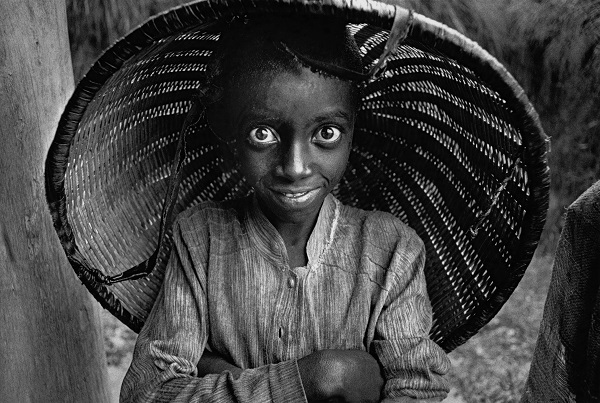
from Sebastião Salgado, Africa, Taschen, USA, 2007
Child worker at the Mata tea plantation. Rwanda, 1991.
Photographs by Sebastião SALGADO / Amazonas images. Organized by Lélia Wanick Salgado, the exhibition curator.
Sebastião SALGADO AFRICA
Oct. 24—Dec. 13, 2009
- Oct. 24—Dec. 13, 2009
- Closed Monday (Tuesday if Monday is a national holiday)
- Admission:Adults ¥800(640)/College Students ¥700(560)/High School and Junior Hight School Students, Over 65 ¥600(480)
Sebastião Salgado is a pioneer of the photo-documentary genre who is still active today and the Tokyo Metropolitan Museum of Photography is delighted to present an exhibition of his latest work, entitled ‘Africa’.
In this exhibition, we look at the true state of Africa, which is sometimes referred to as ‘the neglected continent,’ through the eyes of Sebastião Salgado, who started his career as an economist. Since he first began photographing Africa in the 1970s, various campaigns have been held around the world to prevent starvation and desertification there, and numerous plans have been put into action. Despite this, all that has been achieved is a repetition of advances and retreats. Some regions suffer from endless wars or seemingly unstoppable environmental degradation, while some of the cities displayed rapid economical development for a period and the continent’s natural resources continue to attract international attention. How we should acknowledge and respond to the widening gulf that exists between rich and poor in Africa is a universal question that faces all the countries in the world.
Sebastião Salgado is currently involved with his ‘GENESIS’ series, which he says is the last major project he will work on. For this project, he is traveling the world to cover places never before visited by Westerners, but the project is not limited to photography, he also uses education and tree planting in an effort to demonstrate Earth’s bounty and present a new look at the history of mankind. The upcoming exhibition will consist of approximately 100 works, including some of the latest from the ‘GENESIS’ project.


![チラシ1[pdf]](http://topmuseum.jp/upload/4/77/thums/2009_013_salgado.png)